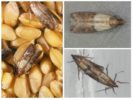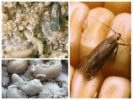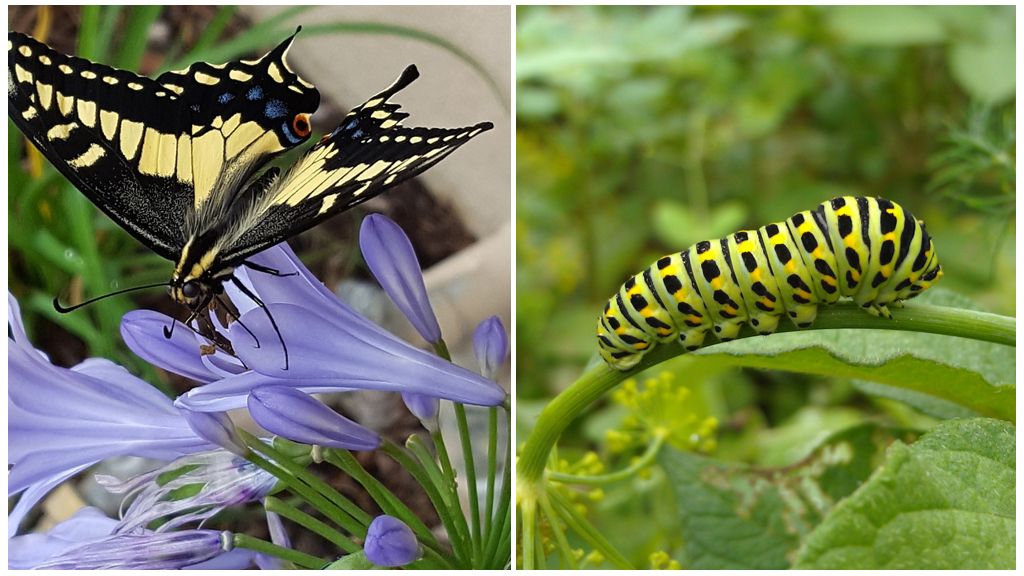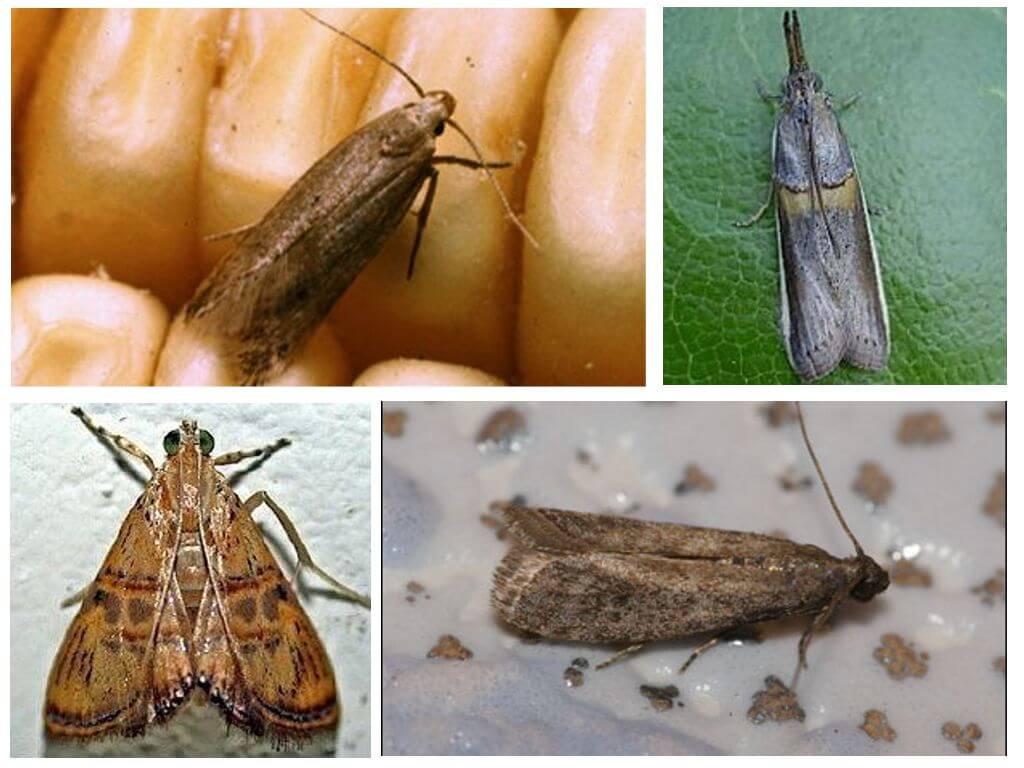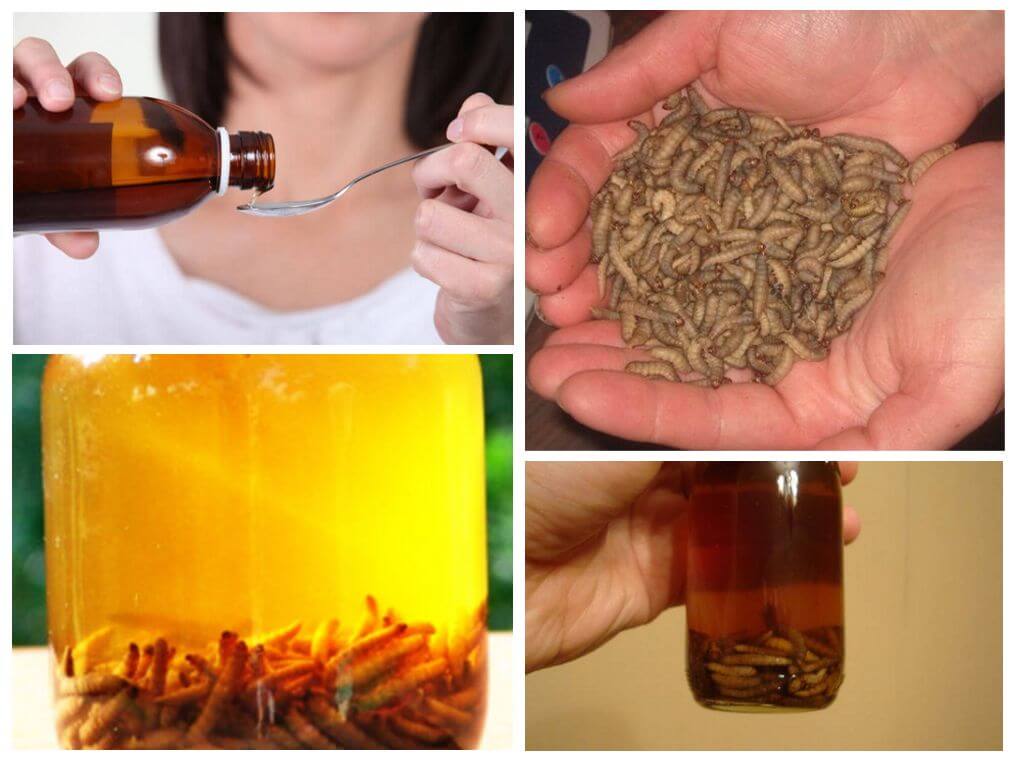- Barn Fire
- Barn Fire
- What eats a barn fire
Mill fire - a butterfly that belongs to one of the largest families of Lepidoptera - real fire. The family has about 6,200 species of butterflies. The native land of this species is presumably India, therefore the butterfly is also called the southern barn or grain moth.
Description of the species and life cycle of the mill butterfly
The mill fire is a small butterfly with narrow front wings. Their length is 3 times the width. The wing has a curved front. The middle part of the front wings is yellowish-whitish, and the front and rear half are buffy with dark small specks. The mill fire in the photo differs from the rest of the family in the graphic two-tone color of the front wings.
The hind wings are very light, with a dark, pubescent margin. The head of the imago is covered with smooth brown scales that protrude in front in the form of a cone.
Caterpillars are yellowish-white with ocher-colored head, with two oblong spots at the base. Size varies from 1.0 to 1.5 cm.
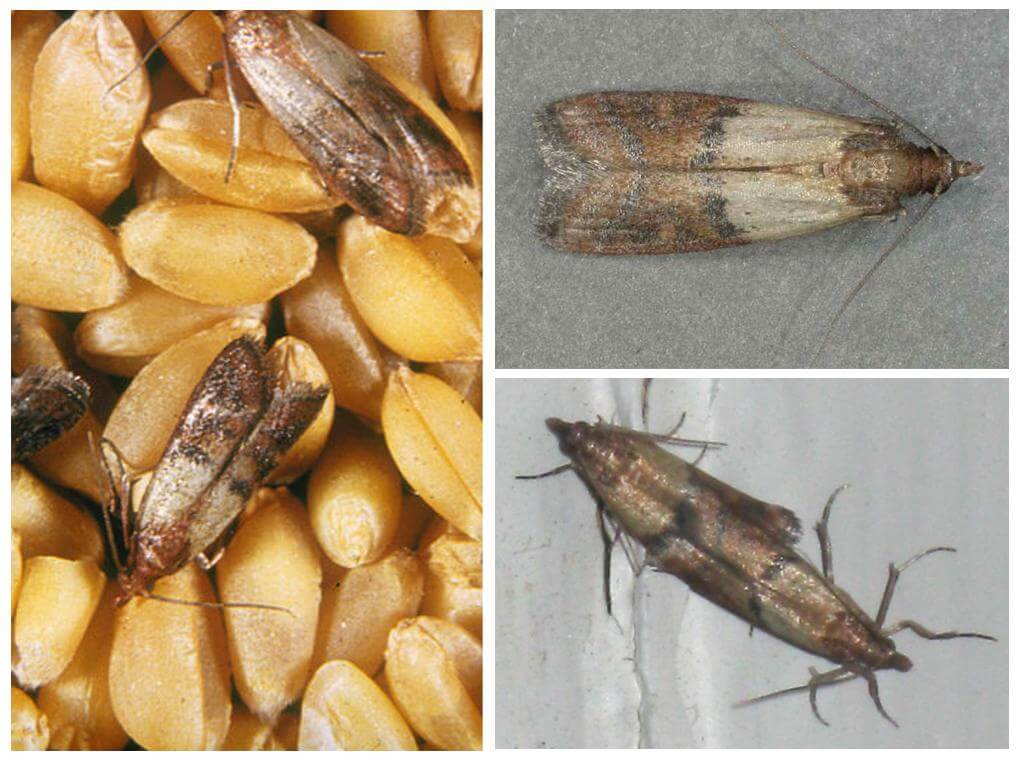
Butterflies of the southern barn moth mate for 1-2 days after leaving the cocoon. A butterfly ready for mating is easy to recognize by its raised belly. Males actively move, flying up to the female, circle around her.
After fertilization, the female begins to lay eggs in a few days. In the clutch there are 1-30 eggs, which the butterfly slightly presses against the support or dried fruits, seeds for firm fixation. A butterfly can lay 150-200 eggs. The egg is oval, whitish with a cellular surface. During development, the egg shell becomes cloudy, a fully formed caterpillar shines through it. At air temperatures above 15 ° C, complete conversion of eggs takes 3-4 days. If the temperature drops, the period increases by 4 times.
The caterpillar is actively crawling, choosing a place convenient for food and vital functions and harming the products. Biting into stocks, it forms a thin tube of silky threads, covered with excrement on top. In it, she lives and eats, gnawing a wide chamber in grains or dried fruits. In the photo - the caterpillar of the mill spine.
Important!
Caterpillars hatching from eggs, provided the temperature is high in the granary, weave cobwebs of the upper layer of stocks to a depth of 10-15 cm. When the temperature drops, the caterpillars go deeper, reaching 1.5-2 m. In its development, the caterpillar goes through 5 ages, the last the longest and, depending on the temperature, takes from 9-26 days. In adverse temperature conditions, it can drag on for up to 1 month.
During pupation, the caterpillar builds a cocoon, which attaches in a secluded place. Inside the cocoon, the first molt occurs. Sometimes the caterpillar does not make a cocoon, and the pupae lie open. Pupation duration also depends on temperature - the higher it is, the more friendly hatching and more generations can take in one season. Combating massive infection is much more difficult.
Mill Caterpillar Feed
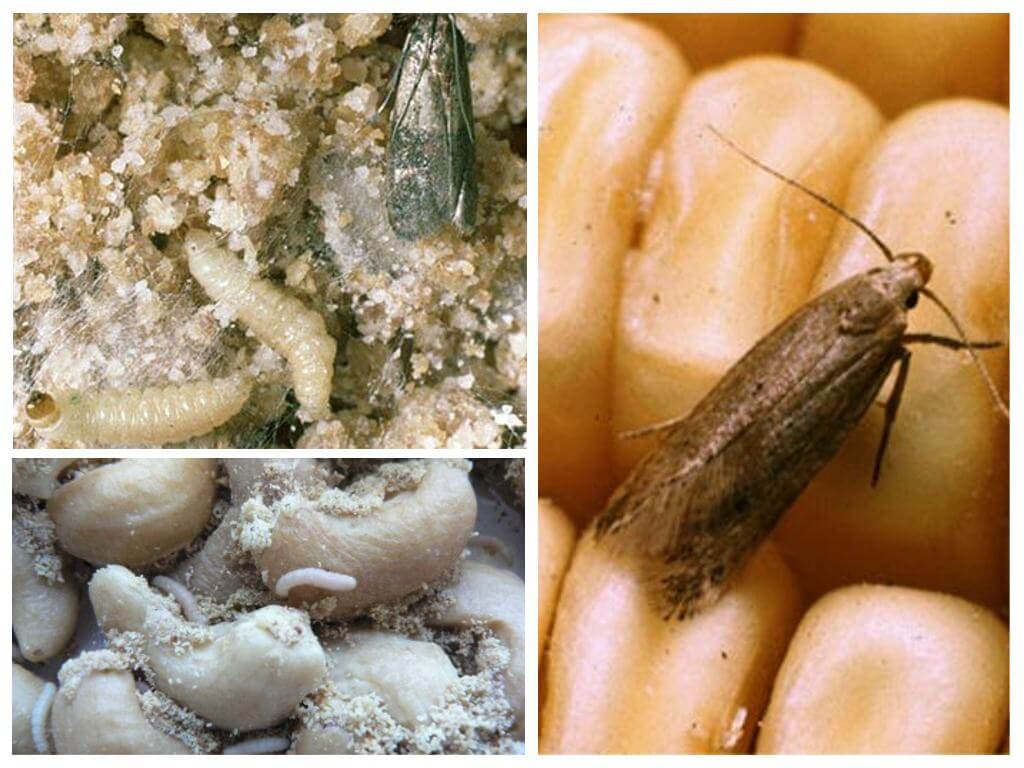
Mill ognevka - a pest of grain, dried fruit, confectionery and flour products. Together with barn pests such as cereal moth, cereal Khrushchak, barn weevil and other insect pests, the mill spine can destroy a large supply of grain by gnawing the embryos.
There is a difference in the size and timing of metamorphosis, not only depending on air temperature. Southern barn moth developing in dry fruits, berries and fruits is much larger in size than that which feeds on flour.
The value of the insect on the farm
Mill fire affects not only food and feed grain, cereals and flour. Cereal moth also eats:
- dry fruits (apricots, figs, dates, apples, etc.);
- nuts and peeled sunflower seeds;
- confectionery, including sweets, chocolate;
- flour and flour products.
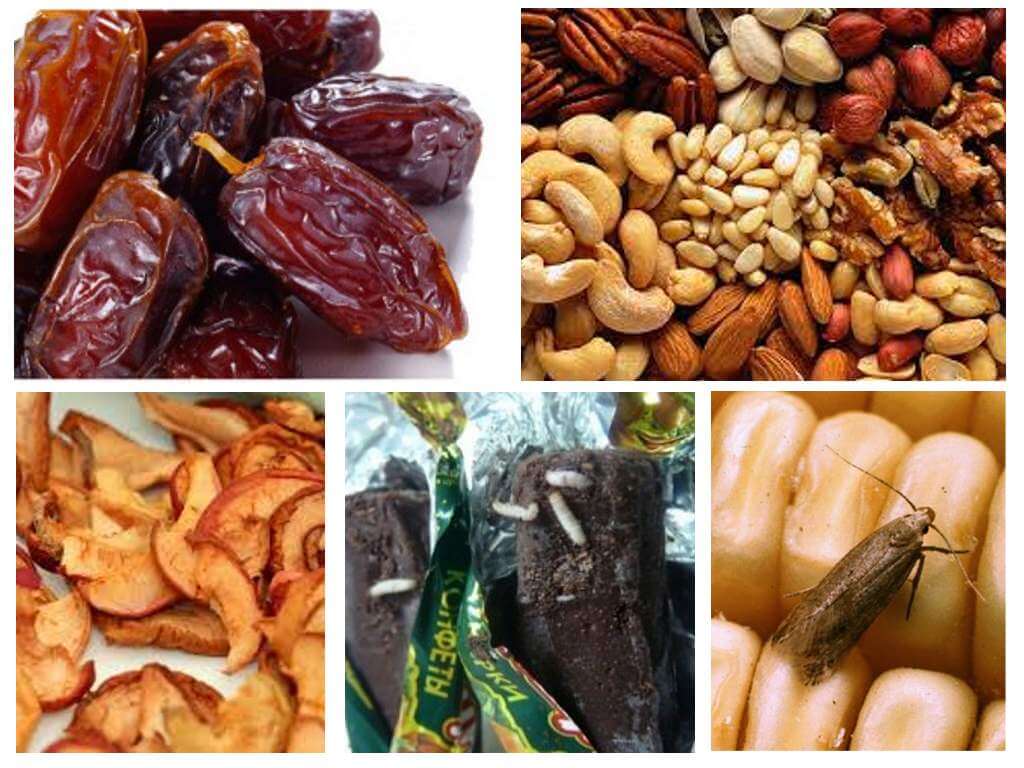
Southern barn mines can damage not only food products in warehouses and storage facilities. Mill fires are found in kitchens, in apartment buildings, damaging insect collections, herbaria, old bee honeycombs.
Barn fires in one generation can spoil a huge amount of grain and other products. Reserves contaminated with excrement and cobwebs are not suitable for consumption, since they cannot be cleaned.
Methods of dealing with mill fire
Pest control methods include:
- cleaning and preparing grain storage and warehouses;
- wet or aerosol treatment with solutions of contact insecticides;
- preparation for grain storage:
- drying grain and flour to medium humidity;
- cleaning from broken and damaged grains;
- gas treatment (fumigation or aeration);
- spraying with liquid disinsection agents.
The moth family does not tolerate low temperatures, so pest control methods include cooling stocks. Insect eggs die when heated. Frying grain using a specific mode is one type of insect control. Control measures may include several methods. Choose the method that is suitable for disinfecting a certain type of product.
